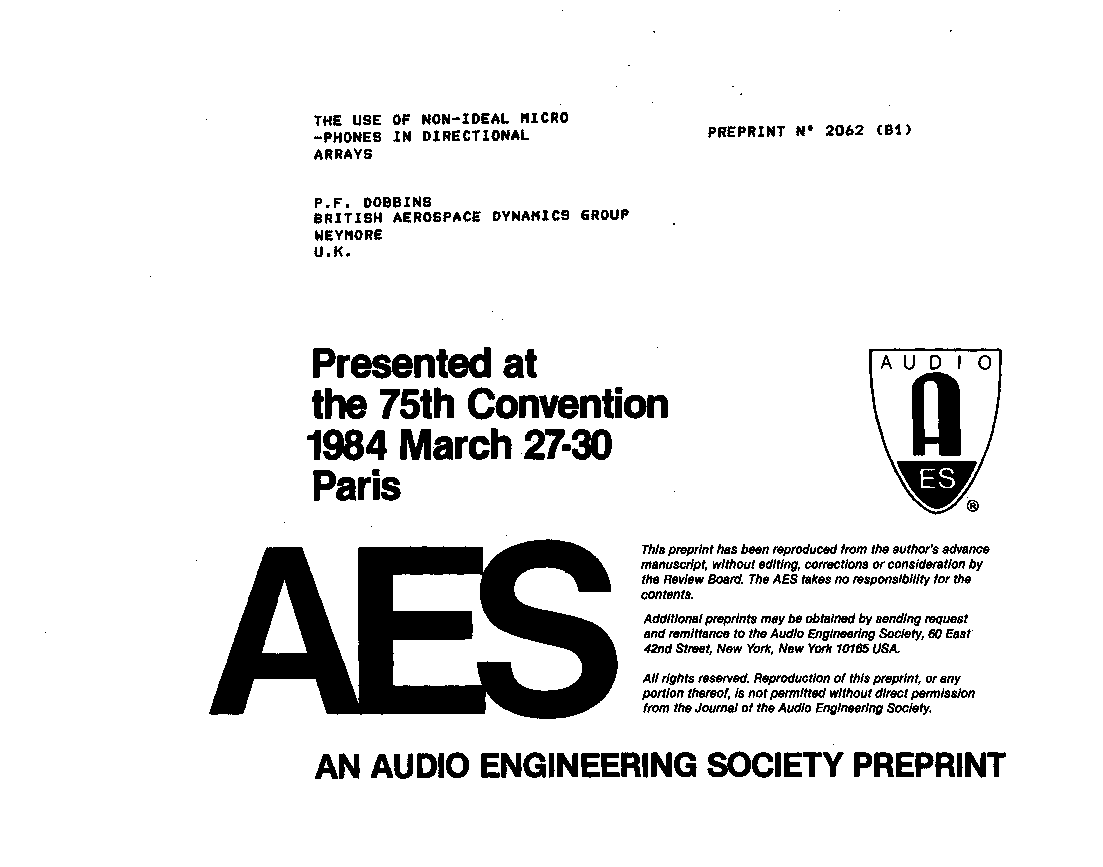Home / Publications / E-library page
You are currently logged in as an
Institutional Subscriber.
If you would like to logout,
please click on the button below.
Home / Publications / E-library page
Only AES members and Institutional Journal Subscribers can download
In some applications an array of omnidirectional or cardioid microphones offers advantages over an ultra-directional microphone, such as increased sensitivity, improved signal-to-noise ratio, and electronic control of beam direction, focusing, and sidelobe level. It is likely, however, that there will be variations in the amplitude and phase response of the individual microphones, especially if low-cost elements are used. Tolerance theory is used to show that, for many applications, these errors do not significantly degrade the directivity of the array. Performance limits are given, and experimental results are presented to support these findings.
Author (s): Dobbins, P. F.
Affiliation:
BRITISH AEROSPACE DYNAMICS GROUP, NEYHORE, UK
(See document for exact affiliation information.)
AES Convention: 75
Paper Number:2062
Publication Date:
1984-03-06
Import into BibTeX
Session subject:
Microphones
Permalink: https://aes2.org/publications/elibrary-page/?id=11702
(585KB)
Click to purchase paper as a non-member or login as an AES member. If your company or school subscribes to the E-Library then switch to the institutional version. If you are not an AES member Join the AES. If you need to check your member status, login to the Member Portal.

Dobbins, P. F.; 1984; The Use of Non-Ideal Microphones in Directional Arrays [PDF]; BRITISH AEROSPACE DYNAMICS GROUP, NEYHORE, UK; Paper 2062; Available from: https://aes2.org/publications/elibrary-page/?id=11702
Dobbins, P. F.; The Use of Non-Ideal Microphones in Directional Arrays [PDF]; BRITISH AEROSPACE DYNAMICS GROUP, NEYHORE, UK; Paper 2062; 1984 Available: https://aes2.org/publications/elibrary-page/?id=11702